Computer Input Devices| Definition, Features & Functions With Examples
Introduction
In the World of Computing, Computer Input devices play a very important role in facilitating human beings to interact with the latest technology and gadgets. From the Traditional Keyboard and Mouse to the Innovative Touchscreens, the World of Computer Input Devices is Vast and Evolving. To use these devices in the best way, it is most important to understand their basic definition, features, and functions respectively. this article explains the basic definition, features, and functions of all the Computer Input devices that are commonly used nowadays.
What is an Input Device?
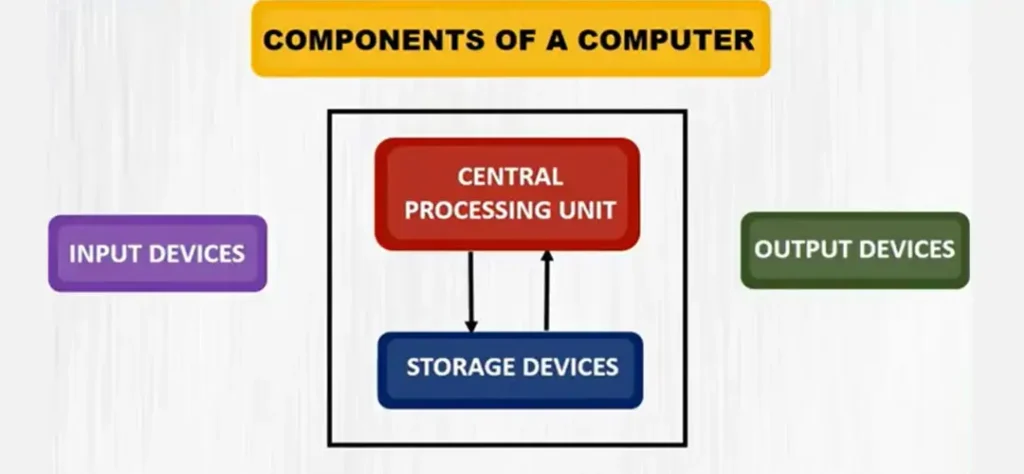
An Input Device is a Device that helps the users to input data into a computer system. These Input devices help the users to transfer the information from the external world to the computer for processing. The Computer Input devices are of various types and features from traditional Keyboard to advanced form of touch screens. Each Input Device performs specific tasks and helps the users for inputting data, such as typing, pointing, drawing, and scanning.
What are Computer Input Devices?
Computer Input Devices are the Hardware Components or tools that are used to input data or commands into a computer system. these input devices help the users interact with computer systems by providing different means to input various types of information, such as text, numbers, images, and commands. The primary function of computer input devices is to facilitate the transfer of data from the external world into the computer for processing. there are different types of computer input devices and each of them is explained one by one.
Different Types of Computer Input Devices
- Keyboard
- Computer Mouse
- Joystick
- Light Pen
- Track Ball
- Scanner
- Passport Scanner
- Pen Scanner
- Barcode Reader
- OMR Reader
- Graphics Tablet
- WebCam
- Microphone
- Magnetic Ink Card Reader
- Touchpad
- OCR
- Digital Cameras
- Touchscreen
- Biometric Device
Top 10 Types of Computer Input Devices
1-Keyboard
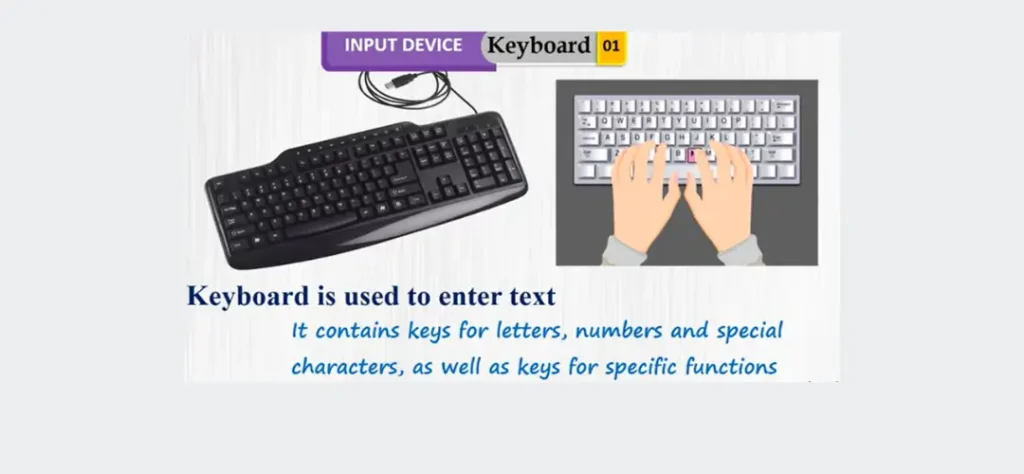
A keyboard is a primary Computer input device for computers and other electronic devices, featuring a set of keys arranged in a specific layout. Each key corresponds to a letter, number, symbol, or function, allowing users to input text, execute commands, and navigate interfaces efficiently. Keyboards come in various designs, including standard QWERTY layouts and ergonomic models, with options for wired or wireless connectivity.
Types of Keyboard
Main Keys of Keyboard and Their Functions
1-Typing Keys
These Keys are letter Keys(A-Z) and Digit Keys(09) Which give the same layout as those of typewriters.
2-Numeric Keys
Numeric Keypad Consists of a Set of 17 Keys that are used to enter the numeric data or cursor movement.
3-Functions Keys
There are 12 function keys on the top of the keyboard in the same row. Each function key has a specific meaning and is used for specific purposes.
4-Control Keys
Control Keys are used to Control the Cursor and Screen. It consists of four directional arrow keys. such keys are Home, End, Insert, Delete, Page Up, Page Down, Escape(Esc), Control(Ctrl), and Alternate(Alt).
5-Special Purpose Keys
Keyboards also contain some special purpose keys like Enter, Shift, Num Lock, Caps Lock, Tab, Space Bar, and Print Screen.
2-Computer Mouse
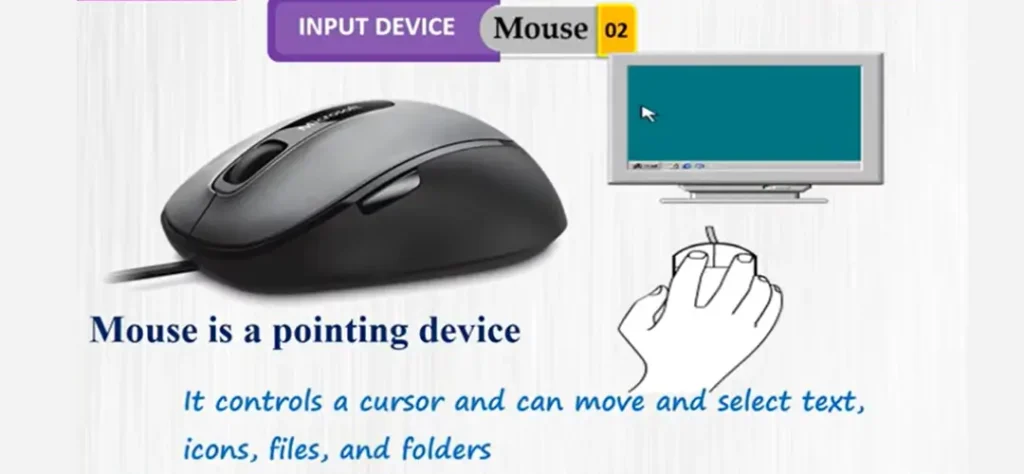
The computer mouse is also known as a pointing device used to control the cursor on a computer screen. It is one of the prominent devices out of computer input devices. It typically consists of a palm-sized device with buttons and a scroll wheel, along with a sensor to detect motion relative to a surface. By moving the mouse across a desk or mouse pad, users can manipulate the cursor’s position, enabling precise interaction with graphical user interfaces, software applications, and web browsers. The mouse enhances productivity and facilitates intuitive navigation in various computing environments.
Major Types of Computer Mouse
3-Joystick

A joystick is an input device primarily used for controlling motion in video games, flight simulators, and other applications requiring precise directional input. It typically consists of a handheld lever mounted on a base, allowing users to tilt or push the stick in different directions to simulate movement on the screen. Joysticks often feature additional buttons and triggers for executing commands or actions, providing a versatile interface for gaming enthusiasts, pilots, and machinery operators alike. They offer tactile feedback and intuitive control, enhancing immersion and user experience in interactive environments.
4-Lightpen
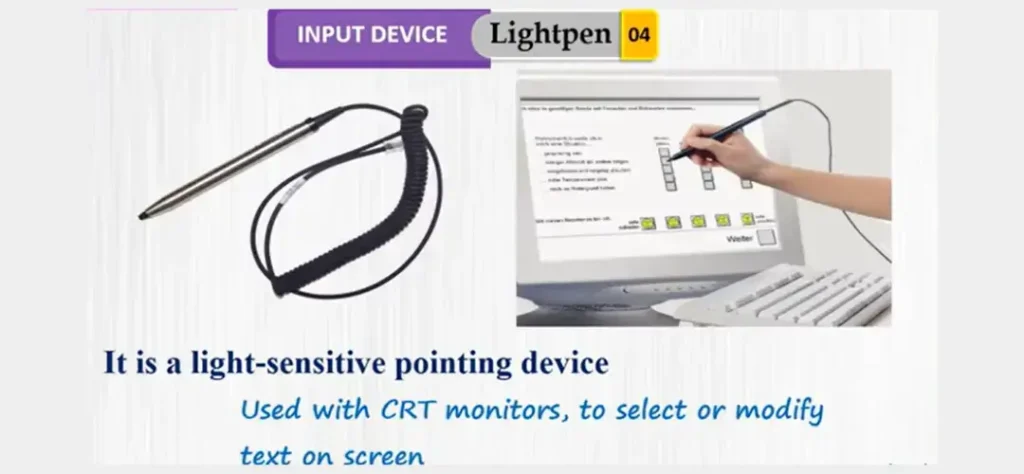
The light pen is a specialized input device of Computer Input Devices used with early computer systems and graphical displays. It comprises a handheld device with a light-sensitive tip that interacts directly with the display screen. By pointing the pen at specific positions on the screen, users can select objects, input commands, or draw directly onto the display surface. The light pen detects the light emitted by the screen, enabling precise and responsive interaction without the need for additional hardware. Although less common today, light pens were instrumental in early computer graphics and user interface development.
5-Trackball
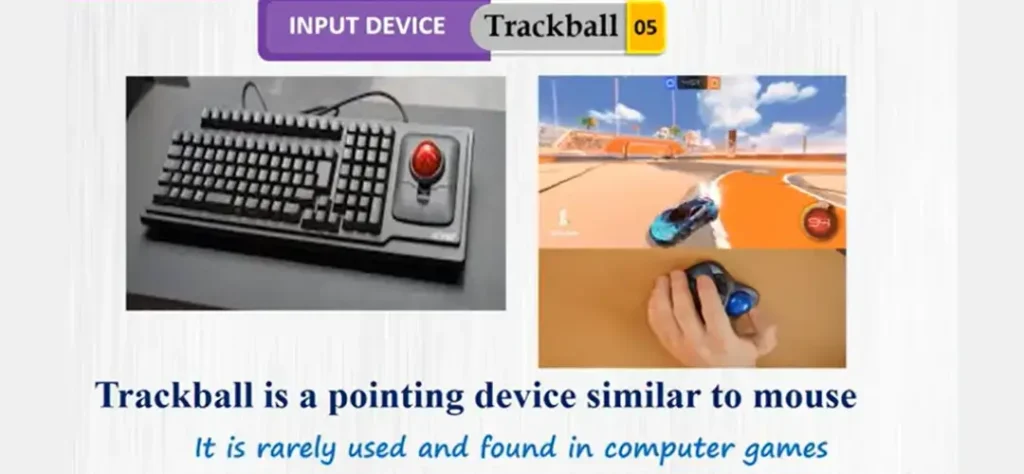
A trackball is an input device similar to a mouse but with a stationary ball protruding from the top of the device. Users manipulate the ball with their fingers or palm to control the movement of the cursor on the screen. The trackball’s design offers advantages in certain situations, such as when desk space is limited or when precise control is required. It is commonly found in industrial and specialized applications, as well as in ergonomic input devices designed to reduce repetitive strain injuries.
6-Scanner
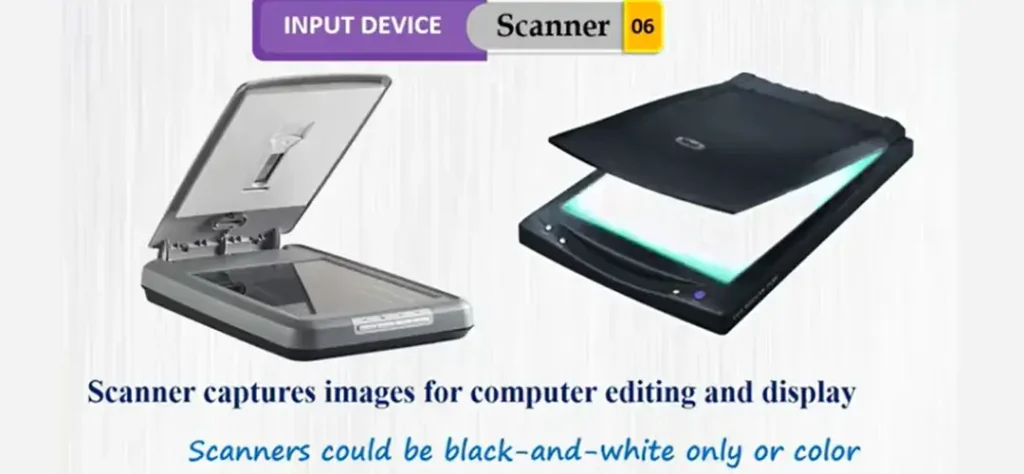
A scanner is a device used to convert physical documents, photographs, or other images into digital format. It captures the content of the source material and creates a digital representation that can be stored, manipulated, or transmitted electronically. Scanners come in various types, including flatbed, sheet-fed, and handheld models, each suited to different scanning tasks and requirements. They find widespread use in offices, libraries, graphic design studios, and home environments for digitizing documents, archiving photos, and facilitating paperless workflows.
Common Types of Scanner
7-Passport Scanner
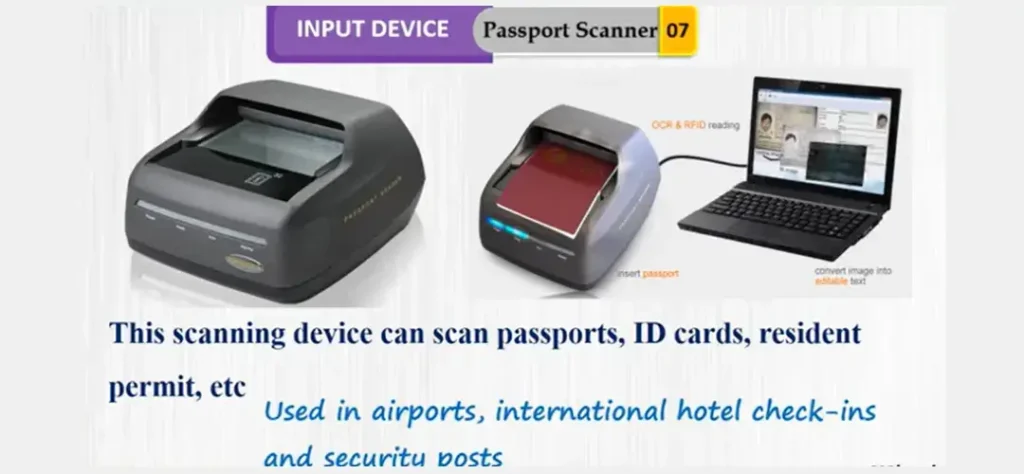
A passport scanner is a specialized device designed to read and capture data from passports and other travel documents. It typically includes optical character recognition (OCR) technology to extract information such as the passport holder’s name, date of birth, nationality, and passport number from the machine-readable zone (MRZ) on the passport’s biographical page. Passport scanners are commonly used in border control, airport security, hotel check-in, and identity verification applications to expedite processing and enhance security measures.
8-Pen Scanner
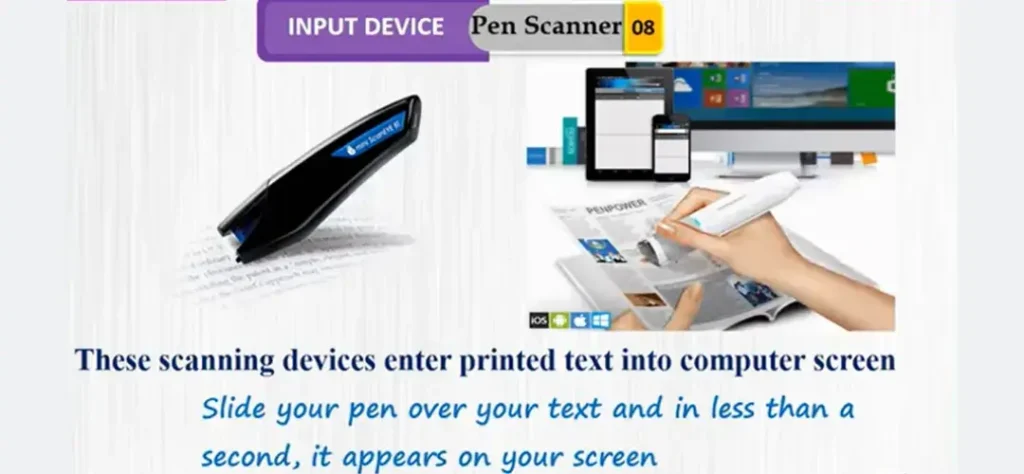
A pen scanner is a handheld device used to scan and digitize printed text or images. It resembles a pen or stylus and is equipped with sensors and optical components to capture the content of documents when passed over them. Pen scanners are portable and convenient for capturing text from books, magazines, business cards, and other printed materials, allowing users to store, edit, or translate the scanned content on a computer or mobile device. They are commonly used by students, researchers, professionals, and anyone needing to digitize text on the go.
9-Barcode Reader
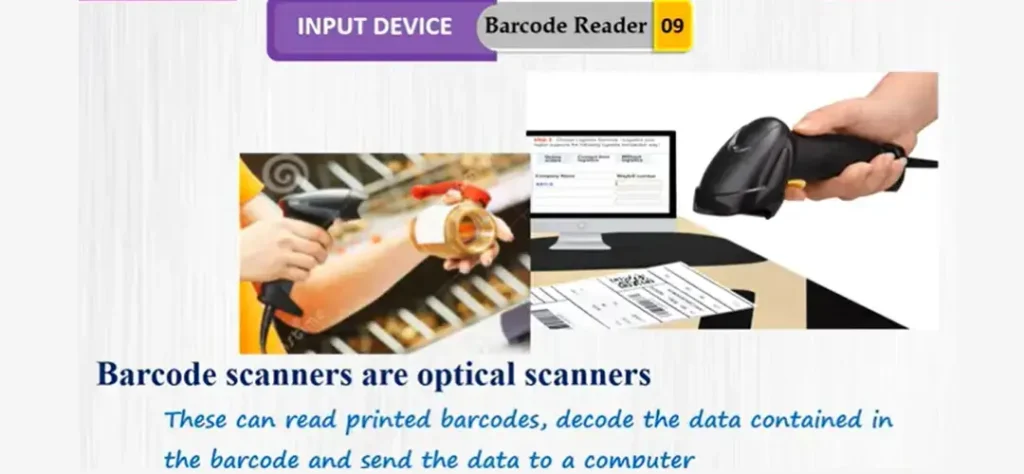
A barcode reader, also known as a barcode scanner, is a device used to capture and interpret data stored in barcode symbols. It emits light onto the barcode, detects the reflected light, and decodes the pattern of black and white bars to retrieve the encoded information. Barcode readers are widely used in various industries for inventory management, retail sales, asset tracking, and product identification. They streamline data entry processes, improve accuracy, and enable efficient tracking and management of goods and assets throughout the supply chain.
10-OMR Reader
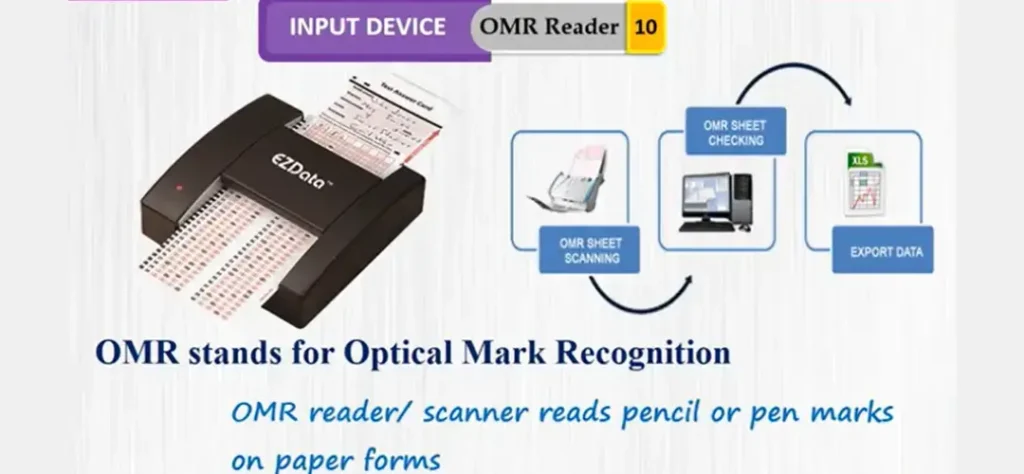
An Optical Mark Recognition (OMR) reader is a device designed to detect and interpret marked areas on specially printed forms or documents. It scans the document to identify predefined areas where users have filled in or shaded bubbles, checkboxes, or other indicators. OMR readers use optical sensors and image processing algorithms to capture and analyze the marks, converting them into digital data for further processing or analysis. They are commonly used in surveys, examinations, assessments, and data collection applications where automated data capture and processing are required.
Other Types of Computer Input Devices
1-Graphics Tablet
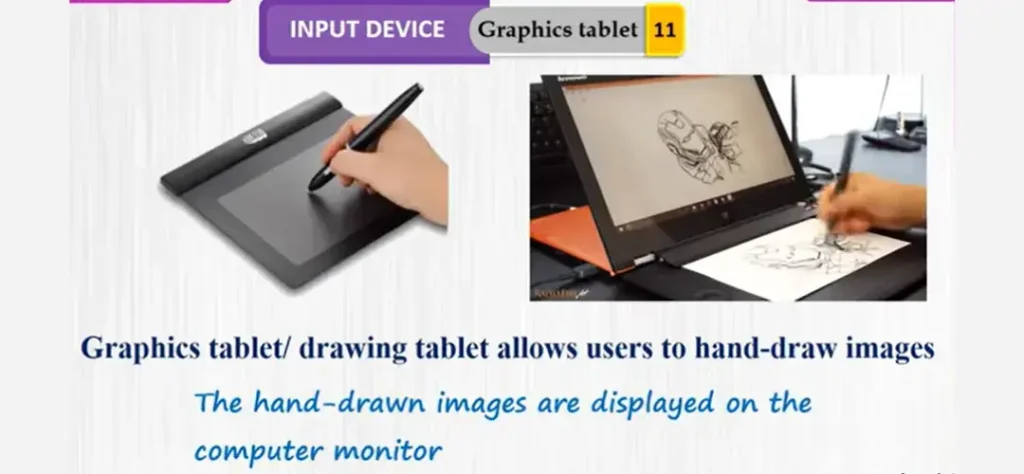
A graphics tablet, also known as a digitizing tablet or drawing tablet, is an input device used by artists, designers, and other professionals for creating digital artwork and graphics. It consists of a flat, pressure-sensitive surface and a stylus or digital pen that allows users to draw, paint, or annotate directly onto the tablet surface. Graphics tablets offer precise control over drawing tools, brush strokes, and pressure sensitivity, enabling natural and intuitive interaction with digital art software. They are popular among illustrators, animators, architects, and digital designers for their versatility and workflow efficiency.
2-Webcam
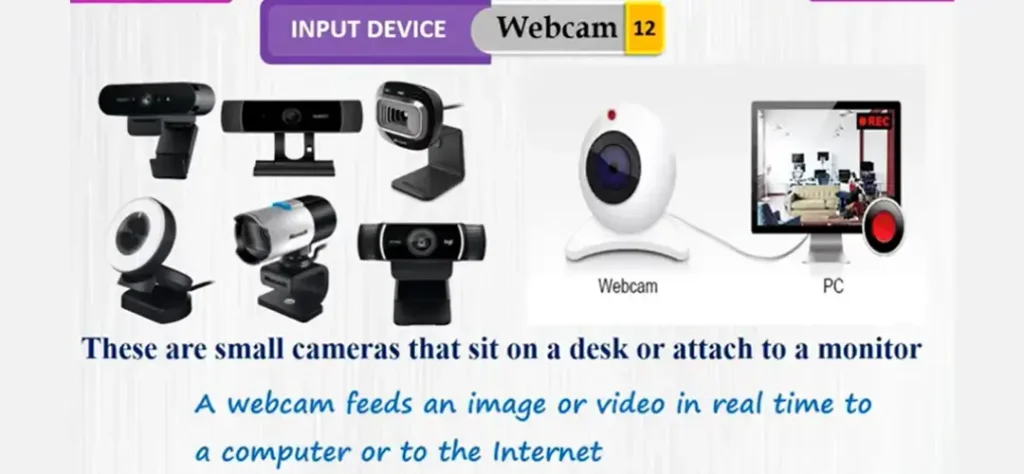
A webcam is a digital camera device connected to a computer or network, used for capturing and streaming live video or images. It typically features a small lens and sensor, along with built-in microphones for capturing audio. Webcams are commonly used for video conferencing, online meetings, live streaming, surveillance, and social media applications. They enable face-to-face communication over the internet, allowing users to see and interact with others in real-time. Webcams are integrated into laptops, monitors, and standalone devices, offering convenience and versatility for personal and professional use.
3-Microphone

A microphone is a transducer device that converts sound waves into electrical signals for recording, amplification, or transmission. It consists of a diaphragm or membrane that vibrates in response to sound pressure variations, generating an electrical signal proportional to the sound waves. Microphones come in various types, including dynamic, condenser, and ribbon models, each suited to different applications and environments. They are used for voice communication, audio recording, sound reinforcement, and speech recognition in diverse settings such as studios, concerts, conferences, and telecommunications.
Types of Microphone
4-Magnetic Ink Card Reader
A magnetic ink card reader (MICR) is a device used to read and interpret data encoded in magnetic ink characters printed on documents such as checks, credit cards, and identification cards. It employs magnetic sensors to detect the unique patterns of magnetized ink, representing alphanumeric characters and symbols and translates them into digital data for processing. MICR readers are commonly used in banking, financial institutions, retail, and security applications for check processing, transaction authorization, and identity verification, offering high accuracy and reliability in reading magnetic ink characters.
5-Touchpad
A touchpad, also known as a trackpad, is a built-in input device commonly found on laptop computers and portable devices. It consists of a flat, touch-sensitive surface that responds to finger movements for cursor control and gesture input. Users navigate by sliding their fingers across the touchpad, with various gestures performing actions such as clicking, dragging, scrolling, and zooming. Touchpads offer a compact and intuitive alternative to traditional computer mice, enabling precise and efficient interaction with graphical user interfaces, web browsers, and software applications in mobile and desktop computing environments.
6-OCR
Optical Character Recognition (OCR) is a technology that converts printed or handwritten text into machine-encoded digital text. It involves analyzing images containing text characters and identifying their shapes, patterns, and arrangements to recognize and extract the textual content. OCR systems use optical sensors, image processing algorithms, and linguistic analysis techniques to interpret the characters and convert them into editable and searchable digital text. OCR technology finds applications in document scanning, data entry, text recognition, and information retrieval, automating tasks that involve digitizing printed materials and extracting text from images.
7-Digital Cameras
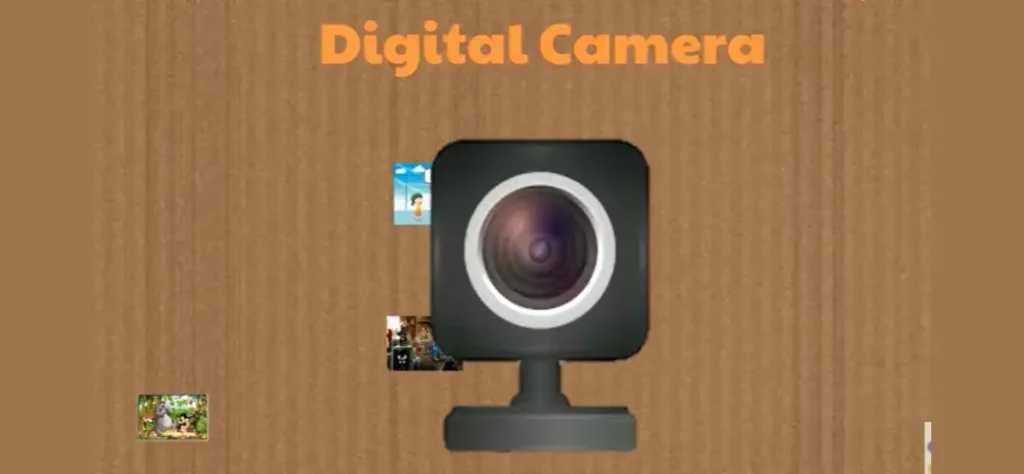
A digital camera is an electronic device used to capture and record photographs and videos in digital format. It consists of an image sensor, lens assembly, and electronic components for capturing, processing, and storing images. Digital cameras offer various features and functionalities, including adjustable exposure settings, autofocus, image stabilization, and multimedia recording capabilities. They are available in different types and form factors, including compact point-and-shoot cameras, mirrorless interchangeable-lens cameras, and digital single-lens reflex (DSLR) cameras, catering to diverse photography needs and skill levels. Digital cameras are widely used by photographers, enthusiasts, and professionals for capturing memories, documenting events, and creative expression.
8-TouchScreen
A touchscreen is a display device that allows users to interact directly with the screen by touching it with their fingers or a stylus. It incorporates touch-sensitive technology that detects and responds to touch gestures, enabling users to navigate interfaces, input commands, and manipulate content directly on the display surface. Touchscreens come in various types, including resistive, capacitive, and infrared models, each offering different levels of sensitivity, accuracy, and multitouch capabilities. They are used in smartphones, tablets, laptops, interactive kiosks, and public displays, providing intuitive and immersive interaction experiences in diverse applications such as gaming, education, retail, and information kiosks.
9-Biometric Device
A biometric device is an electronic system that authenticates individuals based on unique biological characteristics or behavioral traits. It captures and analyzes biometric data such as fingerprints, iris patterns, facial features, voice prints, and behavioral patterns for identification or verification purposes. Biometric devices use sensors, algorithms, and databases to compare and match biometric data against stored templates or reference samples, confirming or denying a person’s identity with a high degree of accuracy. They are used in various security, access control, and authentication applications, including border control, law enforcement, banking, healthcare, and personal device authentication, enhancing security and privacy through reliable and convenient biometric authentication methods.

